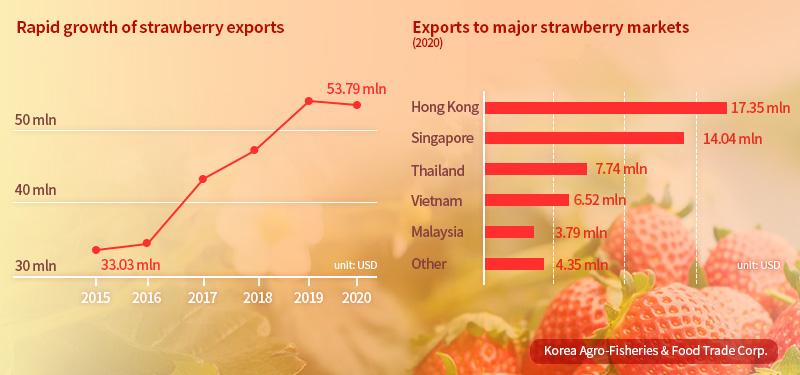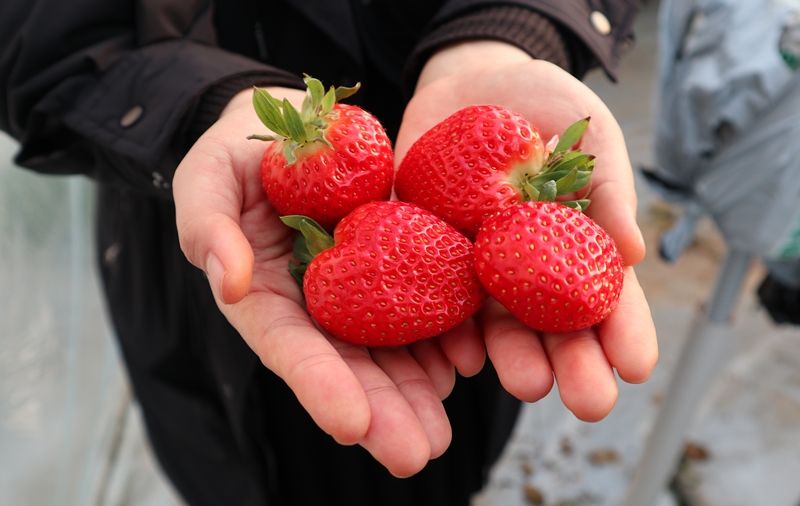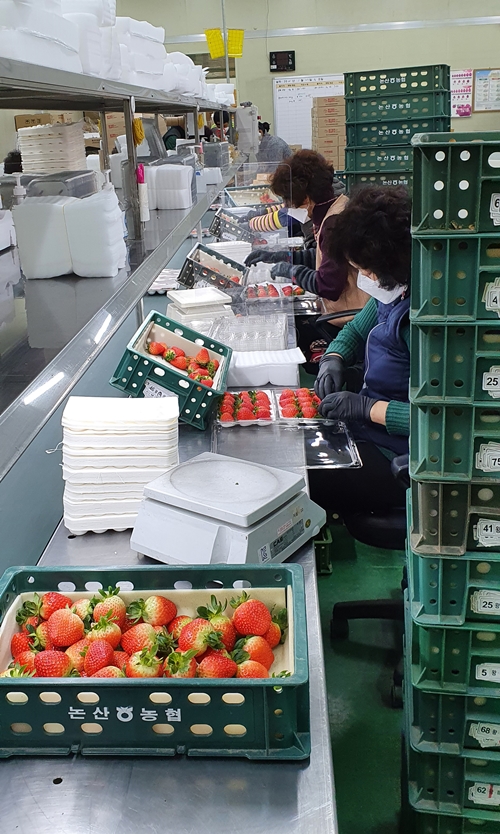By Lee Kyoung Mi, Lee Jae-eun and Lee Jihae
Video = Choi Taesoon, Kang Seunghui
Nonsan, Chungcheongnam-do Province | Jan. 25, 2021
Korean strawberries are very sweet, high quality and cost competitive, traits that have captivated people around the world enough to have the fruit exported on chartered planes.
The Korea Agricultural Trade Information under the Korea Agro-Fisheries and Food Trade Corp. on Feb. 5 said strawberry exports are gradually increasing every year. Last year's shipments reached USD 53.79 million, a huge jump from USD 33.03 million in 2015.
The biggest market for Korean strawberries is Hong Kong with 30% of exports, followed in order by Singapore, Thailand, Vietnam and Malaysia. In Vietnam, 71.58% of strawberries are from Korea.
Korea exports strawberries to about 20 countries including the U.S., New Zealand and Canada. (See the graph below)

Korean strawberry exports have steadily grown every year as shown by this graph. (Korea Agro-Fisheries and Food Trade Corp.)
To learn why Korean strawberries are so competitive both at home and abroad, Korea.net on Jan. 25 visited Nonsan, Chungcheongnam-do Province, the national hub of the fruit where 20% of the country's total is produced.
The first thing noticeable upon entering the strawberry greenhouse was the color red. Next was the sweet strawberry fragrance's intoxicating effect. Workers were picking berries next to cultivation beds that went up to their waists. The strawberries were grown in these beds, with pollen-carrying bees helping pollination.

These are strawberries freshly picked on Jan. 25 in Nonsan, Chungcheongnam-do Province, the nation's hub for the fruit. (Lee Jae-eun)
Picking and biting into the red and ripe strawberries resulted in a mouthful of the fruit's juice. This taste has captivated people regardless of gender, age or nationality.
On why Korean strawberries are so popular, Jung Hoi-min, who cultivates strawberries in the strawberry farm Korea.net visited, said, "Taste is most important."
"Korea has four seasons so strawberries here have sweetness superior to those from their counterparts in other countries," he said. "The biggest strength of Korean strawberries is their many varieties that are big, sturdy and tasty."
Cha Wan-soo, head of the Agricultural Products Processing Center (APC) of the Nonsan branch of Nonghyup, or the National Agricultural Cooperative Federation, said, "Korean strawberries have good texture and sweetness, and taste best when eaten as fresh fruit because of their moisture."
"Their biggest strength is that people never get tired of their taste."
Until 2005, Japanese strawberries used to comprise more than 90% of the fruit in Korea. To resolve this, agricultural technology institutes of each region including the Rural Development Administration sought to develop homegrown varieties and their distribution.
The advent of the domestic strawberry type Seolhyang initiated the distribution of the nation's own varieties, leading to others such as the export-oriented Maehyang and the preservation-friendly Ssanta. As of Feb. 4, Korea Seed and Variety Service had 49 domestically developed varieties registered and protected, including the big and sturdy Arihyang, King's Berry with a soft peach fragrance and Geumsil, with a very sweet and excellent flavor.
Localization of strawberries shot up from just 9.2% in 2005 to 96% last year, and more Korean varieties are being cultivated abroad. Types such as Maehyang, Seolhyang, Ssanta, Goha and Muha are grown in countries like China, Vietnam, Myanmar, Australia and New Zealand and generating royalties. In July last year, the variety Geumsil was exported to the U.S. for the first time.

Staff at a processing center for agriculture products at the Nonsan branch of Nonghyup, or the National Agricultural Cooperative Federation, on Jan. 25 select and wrap strawberries from each farm. (Lee Kyoung Mi)
The harvested strawberries are sent to the region's processing center for agriculture products and treated with carbon dioxide and chlorine dioxide. CO2 makes the strawberries sturdier and prevents them from getting soft or mushy, and chlorine dioxide removes fungal spores in the air and strawberries, thus enhancing preservation.
The strawberries are wrapped with modified atmospheric material and shipped to Incheon International Airport, thus completing their preparation for export. Their containers inhibit water from evaporating from the fruit and allow them to breathe, thus preserving freshness for three to four days.
Korean strawberries are most acknowledged for their pure taste. Korea is thus rising as a strawberry power thanks to the sweat shed by farmers day and night to cultivate this firm fruit and active government support for the development of homegrown varieties and distribution.
km137426@korea.kr